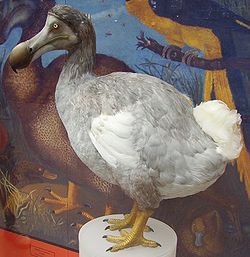|
|
|
 Retail
buyers come and go.
It is VERY easy to
lose a good business
contact (therefore,
lose big orders).
The days of long
term business
contacts in the
fashion industry is
going the way of the
dodo bird. In
the past, retail
buyers would be paid
well and last a long
time in a particular
position at a
company. In the
more modern garment
industry, buyers
have had their wings
clipped too many
times to have
longevity. Now, the
clothing store buyer
has less opportunity
in may respects. In
fact, much of the
buying decisions
come from "planners"
not buyers. And on
the creative aspect,
they are often given
direction for
purchase from
corporate
merchandisers, etc.
In reality, buying
is simply not as fun
nor as rewarding as
it had been in the
past. With that
said, their is a
higher turnover rate
for
employment.
This is a negative
to many clothing
companies for the
following reason.
If for example, I
work for a
wholesale apparel
company and I have
developed a great
relationship with
the women's activewear
buyer at
Macy's,
Nordstrom,
Neiman Marcus,
Dillards,
Khols, or
Lord & Taylor.
What happens when my
buyer leaves his or
her
job and is
replaced with the
cousin of my biggest
competitor??? Oh
boy, I just lost a
huge program...
Ouch.
Retail
buyers come and go.
It is VERY easy to
lose a good business
contact (therefore,
lose big orders).
The days of long
term business
contacts in the
fashion industry is
going the way of the
dodo bird. In
the past, retail
buyers would be paid
well and last a long
time in a particular
position at a
company. In the
more modern garment
industry, buyers
have had their wings
clipped too many
times to have
longevity. Now, the
clothing store buyer
has less opportunity
in may respects. In
fact, much of the
buying decisions
come from "planners"
not buyers. And on
the creative aspect,
they are often given
direction for
purchase from
corporate
merchandisers, etc.
In reality, buying
is simply not as fun
nor as rewarding as
it had been in the
past. With that
said, their is a
higher turnover rate
for
employment.
This is a negative
to many clothing
companies for the
following reason.
If for example, I
work for a
wholesale apparel
company and I have
developed a great
relationship with
the women's activewear
buyer at
Macy's,
Nordstrom,
Neiman Marcus,
Dillards,
Khols, or
Lord & Taylor.
What happens when my
buyer leaves his or
her
job and is
replaced with the
cousin of my biggest
competitor??? Oh
boy, I just lost a
huge program...
Ouch.
As far as I know,
the "relationship
factor" of the
fashion industry
does not show up in
corporate filings.
If you want to
better understand
the relationship
factor, you may want
to participate in a
social network for
the fashion industry
such as the Fashion
Industry Network.
Here are some
possible ways to
gauge the stability
of a WHOLESALE
clothing company:
Are wholesalers
paying their
suppliers on time?
Possibly, if they
are running behind
on payments they are
financially
strapped. Or this
can just mean they
are being clever and
holding onto their
money as long as
possible before
paying an invoice...
Maybe you would be
well advised to find
a friend at one of
the
factors.
How many
hangers,
hangtags,
or garment
labels has
the
clothing wholesaler
purchased?If you
can develop a
relationship with
the trim
suppliers,
you can possibly
determine the number
of units a company
will sell in the
coming quarter... Or
instead of a
relationship with
the trim supplier,
maybe you can simply
ask the wholesaler
for a status on trim
purchases. Let's
keep in mind that as
a clothing company,
I must buy my
hangers "before" I
ship my product to a
store. You can do
calculations based
on fabric purchased,
but that is way more
difficult because
you would have to
understand the
fabric consumption
per garment. Not an
easy task without
having the size
specs.
Check with freight
companies to
determine how much
importing activity
is taking place? It
is not an exact
science, but "X"
number of t-shirts
can fit into a 40'
container. And "X"
number of down
jackets can fit in a
40' container.
Determine the number
of containers a
wholesaler has
imported, you may be
able to get an
estimate regarding
the volume of
clothing. Then you
can estimate the
volume (units) times
the estimated
selling price to
determine an idea of
revenue projection.
If you are going to
do this sort of hard
core research, be
careful to note that
their are a few
different
container sizes
such as 40' HQ, 20',
40', etc. Also,
each garment is
different size based
on the
size spec.
In addition,
different retailers
have different
requirements
regarding how many
garments should be
packed per carton
(which effects
carton size; which
effects number of
units per
container). Also,
is the shipment
palletized (pallets
take up space in the
containers).
Anyway, trying to
determine quantities
shipped is a
challenge. However,
not impossible. The
best way may be to
get your hands on
packing lists. This
may let you figure
out a companies
volume before they
report it in a
filing. Here is
another big
"however"... You
must also keep in
mind that just
because a clothing
company imported "X"
number of garments,
it does NOT mean
that they sold that
many garments during
that quarter. It is
very possible that
their was a buyer
cancelation (or
delay). It is very
possible the
wholesaler is
building up
inventory in their
warehouse as
well (which is a
dangerous thing for
sure).
Another option would
be to take a
garmento
to lunch and buy
them a sandwich.
Possibly, they will
spill the beans and
let you know exactly
how many units they
have sold. If you
do this with several
key sales people
from the company,
you can then
estimate sales
volume.
Note: I do NOT work
in the financial
industry and have
zero knowledge
regarding
regulations. If any
of the concepts
mentioned above are
not legal ways to
obtain knowledge
regarding a
publically traded
company according to
the
SEC, I
strongly suggest
that you do NOT do
any of the above.
You should only do
what is legally and
more importantly
ethically
appropriate.
Most of
above was regarding
"wholesalers" of
apparel and fashion
accessories. Much
of this also can
apply to some
publically
traded retailers.
However, there are
other unique tips to
help figure out
their financial
status.
Unfortunately, I am
too tired at the
moment to list them
here. If you remind
me, maybe I will add
more tips in the
future.
Top
Fashion Websites
Fashion Job Search
|
|
 Image Source : Fashion Week Photos |
|
The
Wall Street Fashion website is being
developed so that we can all learn and
discuss the elements that link the
fashion industry to the
financial industry.
Note: When we use the term Wall Street on our website it is not always simply in reference to the street in New York. It is a more general term to include the entire financial industry. |
About Us
Contact Us
copyright © 2013 to present day. Wall Street Fashion